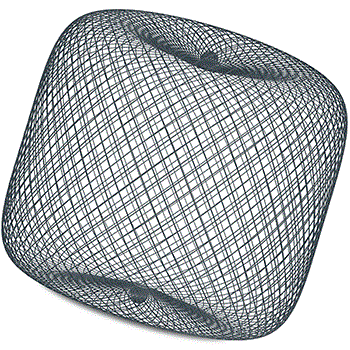
In a 10-site European study reported in the American Journal of Neuroradiology, the safety and efficiency of the single-layer Woven EndoBridge (WEB-SL) device was found to be comparable to that of the older double-layer device. According to the authors, this study is the largest WEB study undertaken to date where WEB-SL devices were used to treat aneurysms that would normally be considered difficult to treat with traditional endovascular approaches.
While the safety and efficiency of the dual-layer WEB device has already been established, Jildaz Caroff and others sought to evaluate the safety of the single-layer device, which is the newest generation of the WEB intrasaccular flow-disrupter family. According to the manufacturer (Sequent Medical) the new WEB-SL has been designed to offer smaller-sized devices with a lower profile to optimise navigability and delivery.
The study authors write that with the WEB-SL improved microbraiding technology allows a reduction in device size and profile, which optimises navigability (through smaller catheters) and delivery.
To conduct the study, data from all consecutive patients treated with a single-layer WEB device in 10 centres from June 2013 to May 2014 were included. Clinical presentations, technical details, intra and perioperative complications and outcomes at discharge were recorded. Clinical and angiographic data at last follow-up were also analysed when available.
The authors report the results of 90 patients (60 women) with 98 WEB-treated aneurysms. In 93 cases, WEB placement was possible. Complete occlusion at the end of the procedure was obtained in 26 instances. Additional treatment during the procedure (coiling and/or stent placement) was necessary in 12 cases. Procedure-related complications occurred in 13 cases, leading to permanent neurologic deficits in four patients. Early vascular imaging follow-up data were available for 44 patients, with an average time interval of 3.3 months. Treatment-related morbidity and mortality rates at last follow-up were 2.2% and 1.1%, respectively.
They conclude stating, “In this study, the feasibility and safety of the single-layer WEB device was comparable with that of the double-layer device.” They caution however, that further studies are needed to evaluate the long-term efficacy.












